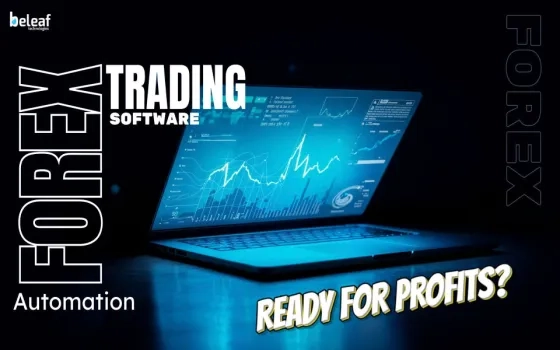In the rapidly evolving world of cryptocurrencies, the journey of a token from creation to adoption is complex and multifaceted. One of the most critical milestones for any crypto project is getting listed on cryptocurrency exchanges. Exchange listings do not merely provide a trading venue but play a pivotal role in shaping the token’s market price and influencing investor sentiment. Understanding the dynamics behind how exchange listings affect these factors is crucial for project teams, investors, and the broader crypto community.
What Is a Cryptocurrency Exchange Listing?
A cryptocurrency exchange listing occurs when a digital asset or token is accepted and integrated into an exchange platform, allowing users to trade it against other cryptocurrencies or fiat currencies. Listings can be on centralized exchanges (CEXs), like Binance or Coinbase, or decentralized exchanges (DEXs), such as Uniswap or PancakeSwap.
The type of exchange and the nature of the listing whether it is an initial listing or a cross-listing on additional exchanges can greatly influence the token's accessibility, liquidity, and overall market perception.
The Direct Impact of Exchange Listings on Token Price
Liquidity and Market Accessibility
One of the most immediate effects of a new exchange listing is the increase in liquidity. When a token becomes available on a popular exchange, it becomes easier for buyers and sellers to transact. Higher liquidity generally means:
-
Tighter Bid-Ask Spreads: Reduced price gaps between buying and selling offers lead to fairer pricing.
-
Larger Trading Volumes: Increased trading activity often correlates with greater investor interest and confidence.
-
Price Stability: More liquidity typically reduces price volatility, attracting institutional investors who prefer stable markets.
As more investors gain access to the token, demand tends to increase, often leading to an immediate price surge. Increased liquidity not only benefits traders by reducing slippage during large trades but also enhances the overall market perception of the token, signaling maturity and robustness.
Price Speculation and the “Listing Pump”
New exchange listings often generate hype, leading to a phenomenon known as the “listing pump.” Traders anticipate higher demand once the token becomes available on a prominent exchange, prompting them to buy in advance. This speculative buying drives the token’s price upward prior to or immediately following the listing announcement.
However, this pump can sometimes be followed by a “dump,” where early traders sell off their tokens to realize profits, causing the price to retrace. The long-term price trajectory post-listing depends on the token’s fundamentals and continued demand. Strong project fundamentals, active development, and community support often help sustain price growth beyond the initial hype phase.
Exposure to Broader Investor Bases
Listing on major exchanges exposes a token to global audiences, including retail and institutional investors. Some exchanges have millions of active users, meaning a token can rapidly gain visibility and credibility.
Tokens listed on well-known platforms often experience a boost in price as new investors discover and purchase the asset, increasing demand organically. Beyond just price impact, exchange listings can open doors to new partnerships, integrations, and ecosystem developments, reinforcing a token’s long-term viability.
Arbitrage Opportunities Across Exchanges
When a token is listed on multiple exchanges, price differences may arise due to varying liquidity and demand on each platform. Traders exploit these price gaps through arbitrage, buying the token cheaper on one exchange and selling it higher on another.
This arbitrage activity helps to balance prices across exchanges, increasing overall market efficiency. It also encourages higher trading volumes, indirectly supporting the token price and market stability. Furthermore, arbitrageurs play a crucial role in market depth enhancement, as their actions often incentivize market makers to provide tighter spreads and deeper order books.
How Exchange Listings Influence Investor Sentiment
Investor sentiment—the collective attitude and feelings of investors toward a specific token or the broader market—is highly reactive to news and developments. Among these, exchange listings stand out as a significant catalyst capable of shifting perception swiftly and decisively.
Validation and Credibility
A listing on a reputable exchange serves as a strong validation signal. Established exchanges conduct thorough due diligence before adding new tokens, evaluating factors such as the project team’s credibility, the underlying technology, legal compliance, and market demand. This vetting process helps protect exchange users from scams or poorly structured projects. When investors see a token featured on trusted platforms, it boosts their confidence, making the token appear more legitimate and reliable. Such validation often attracts long-term holders who prioritize stability and trustworthiness over speculative gains.
Increased Media Coverage and Social Buzz
Exchange listings rarely happen in isolation—they typically coincide with marketing efforts, including press releases, social media announcements, influencer endorsements, and community events. This concentrated media exposure raises awareness and piques investor interest. Positive sentiment can rapidly amplify across crypto forums, Twitter threads, Telegram groups, and other channels, sometimes even going viral. The resulting buzz creates a feedback loop where excitement drives buying pressure, which then fuels more enthusiasm and coverage.
Enhanced Community Engagement
Listings act as tangible milestones for project communities. Celebrating a listing energizes supporters and stakeholders, fostering a sense of achievement and momentum. Active, engaged communities contribute significantly to maintaining positive sentiment by sharing news, educating newcomers, and driving token adoption. This collective energy often translates into sustained ecosystem growth and investor loyalty.
Psychological Impact and FOMO (Fear of Missing Out)
One of the most potent psychological drivers linked to exchange listings is FOMO. When investors witness rapid price increases or a surge in market attention triggered by a listing, many fear missing out on potential profits. This fear motivates quick buying decisions, which can further elevate the token price and reinforce positive sentiment. However, the opposite effect can also occur—tokens that fail to secure anticipated listings or face delisting events may trigger panic selling and negative sentiment, underscoring how sensitive investor psychology can be.
Factors That Moderate the Impact of Exchange Listings
While exchange listings can significantly influence sentiment and token price, their magnitude and sustainability depend on several moderating factors:
Exchange Reputation and Reach
A listing on a top-tier exchange such as Binance, Coinbase, or Kraken usually yields a stronger and more lasting impact than a listing on smaller, regional, or lesser-known platforms. High-profile exchanges offer deep liquidity, large user bases, and greater trust, all of which translate into meaningful market activity and investor confidence. Conversely, listings on obscure exchanges may have limited effects or even raise red flags regarding project quality.
Token Utility and Fundamentals
A listing is not a guaranteed recipe for sustained price growth. Tokens backed by clear utility, ongoing development, real-world applications, and strong community support are more likely to maintain or increase their value post-listing. Projects without solid fundamentals may experience a brief price spike followed by rapid declines once speculative interest wanes.
Market Conditions
Broader market dynamics play a crucial role in modulating listing effects. During bull markets, heightened investor enthusiasm can magnify the positive impact of a listing. In contrast, bear markets often dampen sentiment, causing new listings to generate less excitement or fail to prevent price declines.
Listing Type: Initial vs. Cross-Listing
An initial exchange listing is typically a major event that triggers maximum investor interest and media attention. Subsequent cross-listings on additional exchanges usually produce more modest price effects but still contribute to improved liquidity, accessibility, and incremental demand.
Regulatory Environment
The regulatory landscape surrounding cryptocurrency exchanges and token trading significantly influences investor perception. Tokens listed on exchanges that comply with stringent regulatory frameworks are often viewed as safer investments, enhancing positive sentiment. On the other hand, regulatory uncertainties, crackdowns, or legal disputes can overshadow listing benefits and deter investors, sometimes leading to price volatility regardless of exchange activity.
Strategies Projects Use to Maximize Listing Impact
Understanding the multifaceted effects exchange listings have on token price and investor sentiment allows projects to strategically plan their approach, ensuring they extract the maximum benefits from a listing event. Here are key strategies employed by successful projects:
Coordinated Announcement Campaigns
Top-performing projects carefully synchronize their listing announcements with comprehensive marketing efforts. This often includes partnering with crypto influencers, organizing AMAs (Ask Me Anything sessions), and launching targeted social media campaigns. These activities build anticipation, educate potential investors about the project’s value proposition, and create sustained buzz around the listing date, amplifying reach and engagement.
Incentivized Trading Programs
To drive liquidity and maintain interest post-listing, many projects collaborate with exchanges to introduce trading competitions, airdrops, or staking rewards. These incentive programs motivate traders to actively buy, sell, and hold the token, creating a dynamic market environment that supports price stability and volume growth during the critical early phases of the listing.
Post-Listing Community Support
Maintaining strong, ongoing communication with the community is vital to sustaining positive sentiment after the initial listing excitement fades. Regular project updates, announcements of new partnerships, and visible progress on product development help keep investors engaged and confident, fostering loyalty and encouraging long-term token holding.
Strategic Exchange Selection
Projects often take a targeted approach when selecting exchanges for listing, prioritizing platforms that align with their strategic objectives. For example, projects aiming for global exposure may seek listings on large international exchanges, while those focusing on specific regions might target local or regional exchanges. Additionally, exchanges with strong institutional investor bases can be prioritized to attract high-net-worth and professional traders, maximizing impact.
Preparing the Infrastructure
Technical readiness is a crucial yet sometimes overlooked factor. Projects ensure their smart contracts, wallets, and liquidity pools are fully optimized and thoroughly tested before listing. This preparation minimizes technical glitches or security vulnerabilities, instilling investor confidence and preventing disruptions that could undermine market performance.
Timing Listings for Maximum Impact
Timing plays a strategic role in amplifying listing benefits. Projects often schedule listings to coincide with broader positive market trends, relevant sector growth, or significant internal milestones like successful security audits, major partnerships, or product launches. By layering these positive signals, projects create a stronger narrative that attracts investor attention and sustains momentum.
Case Studies: Exchange Listings That Moved Markets
Examining real-world examples can illustrate how exchange listings impact token prices and investor sentiment:
-
Coinbase Listings: Known for stringent listing standards, Coinbase announcements frequently trigger significant price rallies and positive sentiment. For example, when Coinbase listed Ethereum Classic (ETC), the price surged over 40% within 24 hours.
-
Binance Launchpad Listings: Tokens launched via Binance’s Launchpad often experience rapid price appreciation due to Binance’s vast user base and marketing support. However, these are sometimes followed by price corrections as initial hype settles.
-
Delisting Events: Conversely, tokens delisted from major exchanges often suffer price crashes and negative sentiment, highlighting how exchange status directly affects market perception.
-
Polygon (MATIC) Listing: Polygon’s listing on major exchanges coincided with network upgrades and partnerships, leading to sustained price growth and robust investor sentiment.
Conclusion
Exchange listings are pivotal events in a token’s lifecycle, often triggering immediate price increases and shifts in investor sentiment. By providing liquidity, broader market access, and validation, listings can propel a token into the spotlight and catalyze adoption. However, the sustainability of these effects depends on factors such as exchange reputation, token fundamentals, market conditions, and strategic marketing efforts. For investors, understanding these dynamics is key to navigating listing-related volatility and identifying projects with genuine long-term potential.
For projects, carefully planning listings as part of a comprehensive growth strategy can turn these milestones into powerful drivers of value and community support, paving the way for sustained success in the competitive crypto landscape.
















